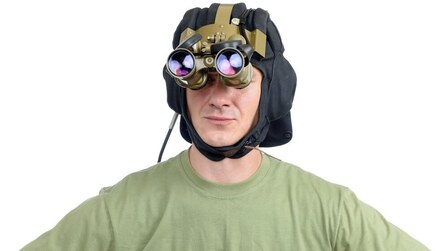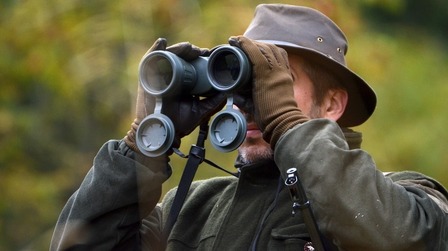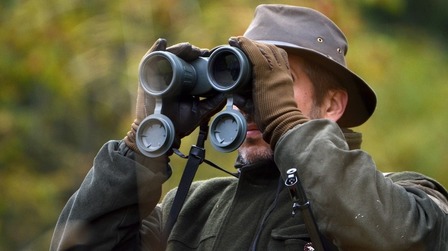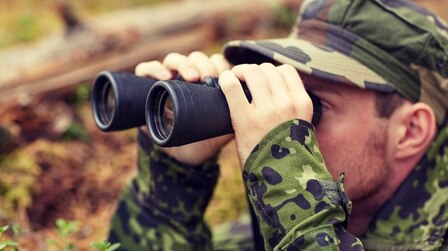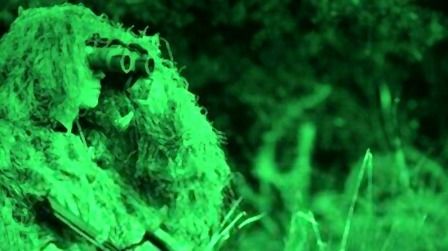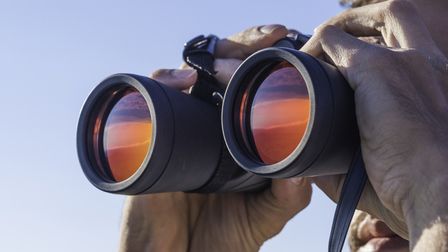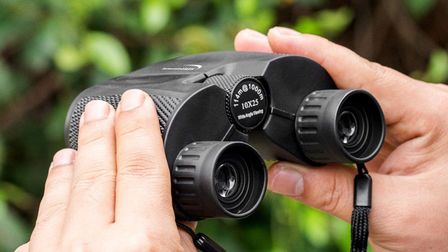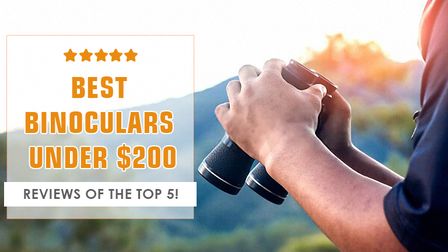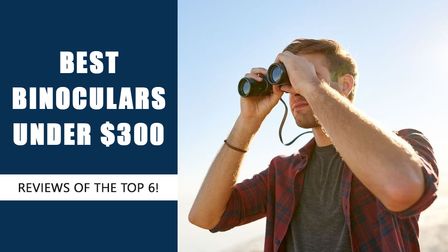It’s not a must to get a telescope for stargazing nowadays, binoculars could be a perfect choice. Due to what you exactly want to do with them, there is a wide range of magnification to choose from.
And if you’re in a consideration of choosing the best binocular for stargazing, here are 5 options picked specifically for groups of people, like beginners or eyeglass wearers. Read on!
Here are the best binoculars for stargazing (Jul 2025 Update):
- Most Lightweight: Vortex Optics Diamondback
- Most Versatile: Nikon 8252 ACULON A211
- Best For Beginner Stargazers: Gosky Titan 20x80 Astronomy
- Best For Eyeglass Wearers: Celestron SkyMaster
- Comfortable Design: Vortex Optics Crossfire
| Top 5 Best Binoculars For Stargazing | ||
|---|---|---|
Most Lightweight | Vortex Optics Diamondback | Read Our Review |
Most Versatile | Nikon 8252 ACULON A211 | Read Our Review |
Best For Beginner Stargazers | Gosky Titan 20x80 Astronomy | Read Our Review |
Best For Eyeglass Wearers | Celestron SkyMaster | Read Our Review |
Comfortable Design | Vortex Optics Crossfire | Read Our Review |
Most Lightweight: Vortex Optics Diamondback

The most lightweight
Transmit a brighter, clear image thanks to the dielectric, fully multi-coated lenses
Give a slightly more refined focus knob
The edges of the visual field aren’t crisp as the middle
The most outstanding feature of Vortex Optics Diamondback is its astounding lightness – 21.4 oz. – that we believe the average people can easily hold them with steadiness. No need for a tripod or strap.
In comparison to the previous sibling (D248), this comes in better ergonomics with emphasis on improved handling and lighter weight.
Plus,there are the multi-position eyecups twist up and the dielectric, fully multi-coated lenses.
People do wonder which is the best among the 8x42, 10x42, and 10x50. Well, our choice is still the middle.
It is a bang for the buck than the 8x42 thanks to a slightly more refined focus knob while with the 10x50, we don’t like its hefty weight and bulk – something that no travelers would say yes to.
Vortex Optics Diamondback Specifications | |
Magnification | 10x |
Field of View (degrees) | 6.3 |
Field of View (feet @ 1000yds) | 330 |
Prism | Roof |
Eye Relief (mm) | 15 |
Weight | 21.4 oz. |
Highlight Features | Dielectric Fully multi-coated lenses Multi-position Eyecups twist up Sleek Short hinge design |
Weighing under 22 oz., Vortex Optics Diamondback is the most lightweight binocular in this list that travelers or backpackers can rest assured to pack it along with less bulk.
Most Versatile: Nikon 8252 ACULON A211

Can quickly adjust its magnification from 10x through 22x
Deliver better brightness than the Action series in low light conditions
More affordable than the Action series
Just built to suffice – you shouldn’t use it in harsh weather conditions
Not grippy enough
The Nikon ACULON A211 is highly appreciated by many experts for its powerful Fingertip Zoom Control Knob that allows the user to quickly adjust its magnification from 10x to 22x.
Impressive, huh?
With this versatile feature, you can cope with other uses such as head-banging concerts, ball games, bird-watching, and boat spotting.
You can say it, the ACULON A211 is a sufficient alternative from the Action series at a more affordable price.
Nikon 8252 ACULON A211 Specifications | |
Magnification | 10x to 22x |
Field of View (degrees) | 36.7 |
Field of View (feet @ 1000yds) | 199 |
Prism | Porro |
Eye Relief (mm) | 8.6 |
Weight | 3.06 pounds |
Highlight Features | Eyepiece mounted Zoom Lever allows fast magnification changes from 10x through 22x |
Developed from its big bro - the Action series, ACULON A211 is a more affordable version with improved brightness in low light conditions. It’s the most versatile binocular that we’ve tried.
Best For Beginner Stargazers: Gosky Titan 20x80 Astronomy

User-friendly construction
Affordable for the quality
Easy to adjust and minimal to use
Some customers said it was heavy to stay still on their hands
For beginners, the Gosky Titan 20x80 is excellent. It lets you see the moons of Jupiter, the Orion Nebula, or craters on the moons with minimal adjustment.
With 80 oz. of total weight, it’s not that hard to hold for stargazing. However, there’s still a sturdy tripod adaptor attached to it for people who want to sky-watch with hands-free.
We like its aluminum rings and base – very solid and sturdy that can fit in a standard vixen dovetail mount.
Gosky Titan 20x80 Astronomy Specifications | |
Magnification | 20x |
Field of View (degrees) | 3.2 |
Field of View (feet @ 1000yds) | 168 |
Prism | Bak-4 Porro |
Eye Relief (mm) | 15.4 |
Weight | 80 oz. |
Highlight Features | Large Bak-4 Roof Prisms and fully Multi-coated 80mm large lens Easy to use |
Priced under $150 with highlights on easy adjustment and user-friendly construction, the Gosky Titan 20x80 is a good choice for amateurs to start with.
Best For Eyeglass Wearers: Celestron SkyMaster

Longer eye relief to deliver moderate distance for people with eyeglasses
Give better view with brightness than a 100mm telescope
Useless tripod adaptor
Out of collimation
With people who wear eyeglasses to correct their specific refractive problems, the Celestron SkyMaster is a friendly option to try. It bolds a longer eye relief of 18mm – a good distance to keep your comfort.
Regardless, it’s considered better than a 100mm telescope, not for its magnification (of course) but the light-gathering power.
In comparison, this 70mm binocular gathers the same amount of light than a telescope but using both eyes on it does give a far better view.
With several face-on galaxies such as M-101 and M-33, it not only shows larger objects but also helps you easily spot them out, forcing you to learn the sky. As a result, you’ll be more independent of coordinate systems.
Celestron SkyMaster Specifications | |
Magnification | 15x |
Field of View (degrees) | 4.4 |
Field of View (feet @ 1000yds) | 231 |
Prism | BaK4 |
Eye Relief (mm) | 18 |
Weight | 3.28 pounds |
Highlight Features | Multi-coated optics Large aperture Long eye relief |
Highlight an extra-long eye relief of 18mm, the Celestron SkyMaster is our top-rated pick for people who have to wear eyeglasses.
Comfortable Design: Vortex Optics Crossfire

Comfortable strap, case, and balanced body construction -> superior hand-feel
Deliver more precise functionalities
Waterproof and fogproof
Right eye diopter
The caps aren’t good at all
The Vortex Optics Crossfire represents quality with emphasis on an ultra-comfortable case, strap, and body construction.
It, on the other hand, is a perfect budget-friendly version of the Diamondback with several similarities. The smooth center focus wheel, twist-up eyecups, and wide field of view are some shining examples.
We particularly love the improved right eye diopter that delivers more exact functionalities to users. Another bonus is a steadier image in comparison to other 12x binoculars.
Vortex Optics Crossfire Specifications | |
Magnification | 12x |
Field of View (degrees) | 5.2 |
Field of View (feet @ 1000yds) | 273 |
Prism | Roof |
Eye Relief (mm) | 15 |
Weight | 30.3 oz. |
Highlight Features | Wide field of view Twist-up eyecups A smooth center focus wheel, and right eye diopter give you precise functionality. |
If you’re looking for a high-quality binocular for stargazing with comfort feeling touch, the Vortex Optics Crossfire will definitely blow your mind.
How To Choose The Best Binocular For Stargazing?
Magnification & Weight
Once you’ve read the list above, no doubt you have noticed numerous configurations on the market. One size can’t definitely fit all.
To determine which magnification range is the Mr. Right for you, consider your specific purposes.
For example, for “space-walking” experience, low-mass portability to magnification is ideal while higher ranges can help users pick out perfect structure within galaxies.
As a matter of the fact, the stronger the magnification, the better the resolution of the countless light points within dense star clusters. However, it’s significantly larger in physical aspect, immersive more bulk if you’re also a traveler or backpacker.
Lower power is our recommendation. At least, it shouldn’t beyond 10x of magnification and under 50mm of the objective lens.
Not only they won’t lower the quality of optical glass but also your shoulders and arms aren’t shaking.
Prism Design
This is also the quickest way to determine whether a binocular is ideal for sky-watching or not.
There are two common options on the market: Porro prisms (the traditional) and Roof prisms (the modern).
Despite the classic, unaesthetic outlook, Porro prisms can “correct” the image to give you exactly what it is in real life, no switching left to right as other prism designs.
Roof, on the other hand, is commented for its fine quality optical glass with many advanced benefits, such as compact design. However, it dominates the high-end niche on the market. If you’re on a tight budget, let go for the Porro.
Exit pupils
This feature is quite relevant to your eyes' pupils, which implies to your age because eyes change with age. The older you are, the smaller the pupil diameter.
Meanwhile, the lower the magnification of binoculars, the larger the exit pupils.
And that definitely doesn’t fit older people’s eyes. To ensure you’ve spent money wisely, check the exit pupils’ shape and floating there in the eyepieces. The best exit pupil should match to your pupils’ diameter.
Which Brands Make The Best Binocular For Stargazing?
Vortex Optics
Vortex was founded in 2004, in the United States – a reliable optics equipment manufacturer, specialized in binoculars, riflescopes, and spotting scopes.
Despite being the “youngest” brand in this list, they are well-known for a reliable, good warranty that customers always feel trustful when buying their products.
Celestron
Another US-based company is Celestron. This manufacturer was firstly established in 1955 by Tom Johnson and then sold for Tasco in 1980. Over the decades, they are one of the leaders in this industry with highlights of revolutionary technologies and one-of-a-kind innovations.
Nikon
Nikon is a multinational corporation, founded in 1917 and currently headquartered in Japan. They are considered a Mr. Giant in the world optics industry, especially cameras. In terms of binoculars, they’re proud to make user-friendly construction with an emphasis on versatility.
FAQs
Are binoculars good for looking at stars?
If you’re just into stargazing, binoculars should be a better choice than telescopes for some good reasons:
- Easier to pick out objects
- More affordable
- Lightweight and compact -> Transport-friendly
- Give a wider field of view to scan bigger, extended nebulae or larger open star clusters
How far can the most powerful binoculars see?
45 – 50 miles.
Are 10x42 binoculars better than 8x42?
In which purpose of use?
Each kind of binoculars has its own strengths and weakness that your specific purposes match to its strengths, apparently, that model is better for you.
The 10x42 binoculars literally give you higher power and stronger magnification to look something at a farther distance more clearly. In turns, the view will dance like drunkards while its hefty weight makes your arms shaking.
This kind will be a good choice for stargazing people with a tripod.
Conversely, the 8x42 binoculars are more compact, lightweight to easily transport. They also deliver brighter and steadier images, just can’t reach as that distant range as the 10x42.
In consideration, it’s more suitable for travelers or backpackers.
Can you see the rings of Saturn with binoculars?
No, you can’t.
To see the rings of Saturn, you must have a telescope. A binocular can just allow you to observe its beautiful golden color.
How do you use binoculars with glasses?
It’s advised to still wear eyeglasses
But you absolutely can put them down while using binoculars. Don’t worry, the image sharpness won’t be affected since you can adjust its focusing mechanism to fit your vision. This works for people who wear eyeglasses to correct near or farsightedness.
Conclusion
Before ending this post, there’s one thing we’d like to make clear - Binoculars can’t be an alternative to telescope due to its limited magnification.
However, it can’t be a better choice for people who are studying astronomy because of its wider field of view. The same with beginners or individuals with a tight budget.
Hopefully, this is a helpful source of information to choose the best binocular for stargazing that fits you. Thanks for reading.


